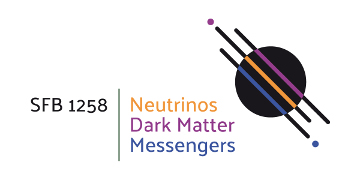N05 - Neutrinos from proton decay: signal from grand unification (completed)
Model building has proven one of the most successful methods for achieving a better understanding of nature. In particular, the Standard model of particle physics, originally just one out of many models, has become one of the most accurate descriptions of nature. Although the Standard model is remarkably successfull in describing observations, there are hints, both from theory and experiments, that the Standard model does not give the full picture. The measurements of neutrinos masses made an extension of the Standard model necessary, however, it ist still unclear whether neutrinos are their own antiparticles, thus of Majarana type, or not, thus Dirac particles. Apart form that, the absolute mass scale has not been determined and it is still unclear if leptons conserve CP symmetry. But there are good prospects that these questions will be answered by the corresponding experiments in the nearer future. The 'Majoarana vs. Dirac' question, is beeing addressed in several double beta decay experiments, such as, in particular GERDA (N01). The absolute neutrino mass scale will be explored by KATRIN down to 0.2 eV (see N04).
Determining neutrino properties will allow us to learn about physics at very high energies, where there is a more unified description of nature. The very properties of neutrinos will, thus, give us important insights into how nature works at amore fundamental level. In N05 we will therefore study these questions in some sort of unified framework. Even in the absence of new insights from the LHC, it is clear that already the structure of the Standard model matter particles hints at unification. The notorious problems of the usual models of grand unification can be solved by settings with extra dimensions. It is believed that a clear smoking gun signature for unification is proton decay. We will specify, in this project, under which conditions this expectation is justified.


